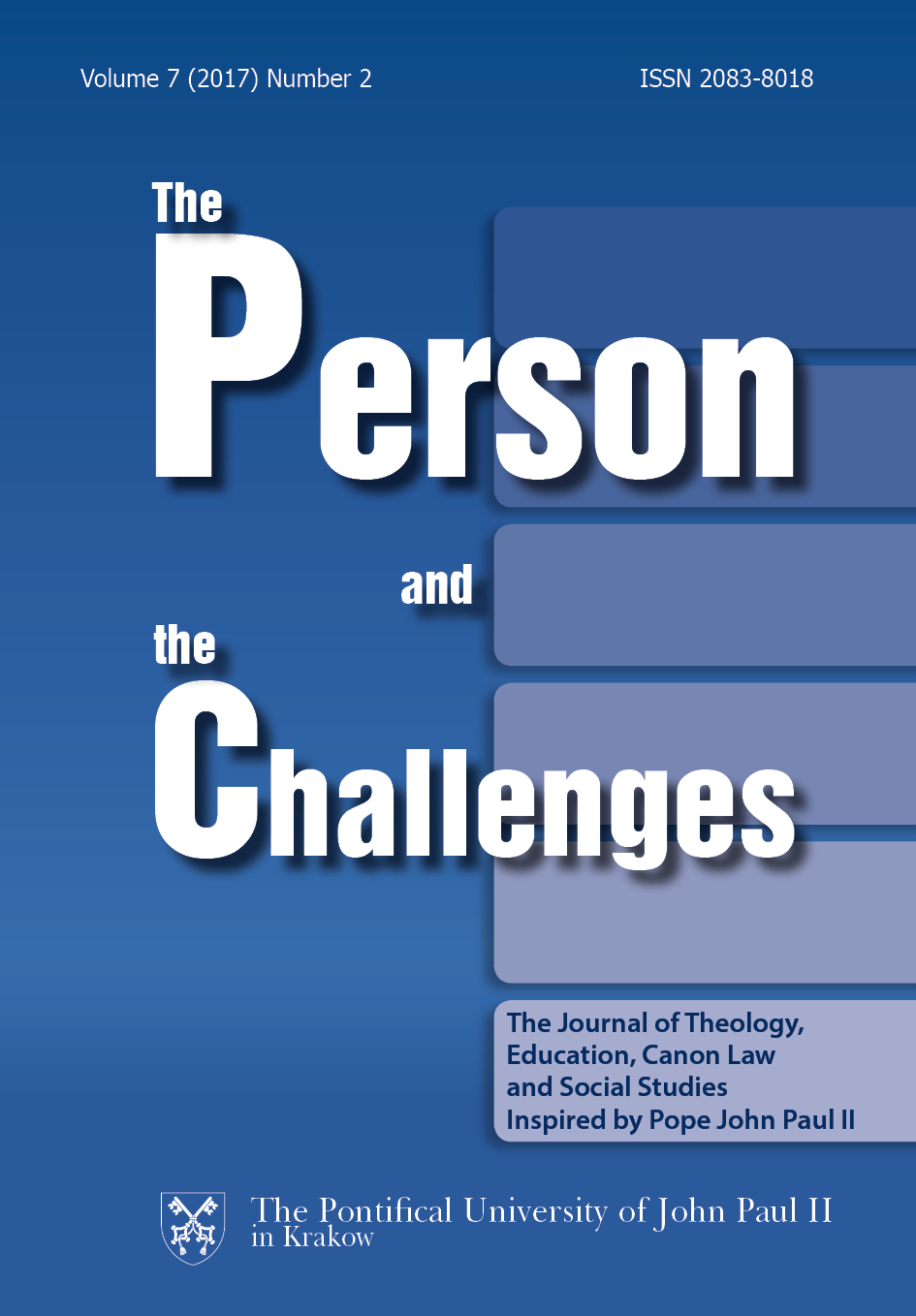An Assertive Method as Help in Catechesis?
DOI:
https://doi.org/10.15633/pch.2181Słowa kluczowe:
Assertive method, catechesis, P. Ricoeur, passivity, God’s pedagogy, selfhoodAbstrakt
The problem of discipline, and motivation in the learning process, is ever more glaring in catechesis. The assertive approach attempts to, at least partially, solve this problem in modern education. This discussion will show that it is possible to use this approach if assertiveness is enriched by the fundamental anthropological discovery as developed by P. Ricoeur in his hermeneutics of selfhood. He does not see human personality as static, but as dynamic, which gives key roles to three forms of passivity: towards one’s own body, towards others, and towards one’s conscience. The concept of passivity will be woven into catechesis, which aligns better to the spirit of Christian theology. The example of Jesus’ catechesis on the road to Emmaus will be used to show the practical usefulness of assertiveness, and the triple passivity in Christian evangelization.Bibliografia
Canter L. and Canter M., Assertive Discipline for Parents, New York 2009, HarperCollins.
Canter L. and Hausner L., Homework without Tears, New York… 2009, HarperCollins.
Chamberlin L. J., An Assertive Approach, “American Secondary Education” 12 (1982) 1, p. 2–4.
Congregation for the Clergy, General Directory for Catechesis, http://www.vatican.va/roman_curia/congregations/cclergy/documents/rc_con_ccatheduc_doc_17041998_directory‑for‑catechesis_en.html (16.05.2017).
John Paul II, Catechesi tradendae, http://w2.vatican.va/content/john‑paul‑ii/en/apost_exhortations/documents/hf_jp‑ii_exh_16101979_catechesi‑tradendae.html (14.05.2017)
John Paul II, Familiaris Consortio, http://w2.vatican.va/content/john‑paul‑ii/en/apost_exhortations/documents/hf_jp‑ii_exh_19811122_familiaris‑consortio.html (15.05.2017)
Lantieri L. ed., Schools with Spirit. Nurturing the Inner Lives of Children and Teachers, Boston 2001, Beacon Press.
Moyaert M., In Response to the Religious Other, Lanham 2014, Lexington Books.
Osewska E., Erwartunge an die katholische Schule in einem postmodernen Zeitalter, „The Person and the Challenges“ 1 (2011) 2, p. 95–108.
Petkovšek R., Geneza postmoderne misli o Bogu, II., »Tretji dan« (2011) 1/2, p. 5–15.
Ricoeur P., Oneself as Another, Chicago 1992, The University of Chicago Press.
Ricoeur P., Critique and conviction: conversations with François Azouvi and Marc de Launay, New York 1995, Columbia University Press.
Robinson G. and Maines B., Who Manages Pupil Behaviour? Assertive Discipline – A Blunt Instrument for a Fine Task, “Pastoral Care in Education: An International Journal of Personal, Social and Emotional Development” 12 (1994) 3, p. 30–35.
Stala J., Der Mensch als Person: Die bestimmende Grundlage für Johannes Paul II. in seinem Bild von der Famille, „The Person and the Challenges“ 2 (2012) 2, p. 41–59.
Stiver D. R., Ricoeur and Theology, London 2012, Bloomsbury.
Topping R. R., Revelation, scripture and church: theological hermeneutic thought of James Barr, Paul Ricoeur and Hans Frei, Burlington, Aldershot 2007, Ashgate.
Tunjić N., Veroučitelj kot sopotnik veroučencem, »Bogoslovni vestnik« 69 (2009) 4, p. 493–507.
Pobrania
Opublikowane
Numer
Dział
Licencja
Prawa autorskie (c) 2017 Janez Vodičar

Utwór dostępny jest na licencji Creative Commons Uznanie autorstwa 4.0 Międzynarodowe.
Autorzy publikujący w czasopiśmie udzielają jego wydawcy zgody o następującej treści:
- Autor zachowuje autorskie prawa majątkowe do utworu, a jednocześnie udziela wydawcy czasopisma zgody na jego pierwszą publikację w wersji drukowanej i wersji online na licencji Creative Commons Uznanie autorstwa 4.0 Międzynarodowe oraz zgody na wykonywanie opracowań, w tym przekładów.
- Autor ma możliwość udzielania zgody niewyłącznej na opublikowanie utworu w wersji, która ukazała się w czasopiśmie (np. zamieszczenia go w repozytorium instytucjonalnym lub opublikowania w książce), wraz z informacją o jego pierwszej publikacji w czasopiśmie.
- Autor może umieścić swój utwór online (np. w repozytorium instytucjonalnym lub na swojej stronie internetowej) jeszcze przed zgłoszeniem utworu do czasopisma.

